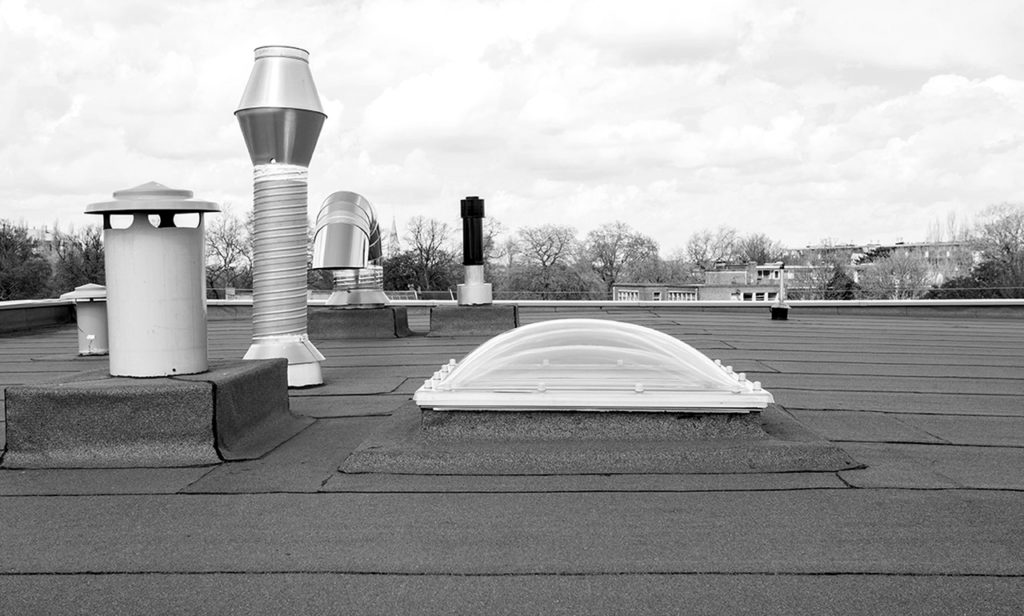Hurricane season is upon us and in the wake of Hurricane Florence, it is imperative that we address the many hazards response and recovery workers face – particularly in terms of rooftop safety. With any natural disaster comes the aftermath where the people impacted must come together to pick up the pieces and begin to rebuild their communities. Employers have a responsibility to both their employees and communities to ensure necessary steps are taken to provide a safe work environment during this difficult rebuilding process.
Potential Hazards
Post hurricane clean up involves many potential hazards of which employers and workers need to be aware. Some of these hazards include mold, contaminated or toxic floodwaters, electrical danger, and structural damage. Structural damage involving holes or weakened roofs can be extremely dangerous and potentially fatal.
In the aftermath of Hurricane Katrina, Rita, and Wilma in 2005, OSHA monitored response and recovery related injuries and fatalities. The Hazard Exposure and Risk Assessment Matrix was compiled summarizing their findings. 129 internal situation reports were filed containing 4,000 entries detailing hazardous work conditions. A total of 6 people lost their lives in the post-storm efforts of Roof Inspection, Tarping and Repair, and Assessment, Cleanup and Structural Repair. Of all of the hazard observations identified in OSHA’s situational reports, Fall Hazards were the most prevalent.
Rooftop Safety Best Practices
Roof inspection, repair, and replacement activities are a dangerous yet necessary part of recovery from any natural disaster. These activities require workers to access roofs to remove debris, install reinforced plastic tarps (blue roofs) or other roofing materials such as shingles and tile. Potential hazards include steep, slippery surfaces, obstacles, holes, and weakened structures.
The OSHA Act of 1970 requires all employers to provide employees with working conditions free of known dangers. OSHA code 1926.501(b)(1) mandates that fall protection systems are utilized when working on roofs or surfaces that are more than 6 feet high. As an employer, there are many protective measures you can implement to ensure the safety of your employees.
- Limit access or set up controlled access zones.
- Use a body harness or restraining belt with lanyard attached to the boom or basket of lift if using aerial lifts. (OSHA code 29 CFR 1926.453)
- Ensure ladders are set on firm stable ground, maintain “3 point contact” and always extend 3 feet above landings.
- Ensure scaffolding is secured, properly planked, and includes guardrails on platforms 10 ft or higher.
- Be aware of wet/slippery surfaces, obstacles, or uneven surfaces.
- Cover or guard holes with warning lines. Covers must support two times the weight (body, equipment, materials) that may be imposed.
- When installing plastic sheeting, permanently mark areas where structural support is inadequate “Danger – No Step”.
- Install guardrails, warning lines or safety nets.
- Use personal fall protection systems (fall arrest system or fall restraint system) that involve a body harness connected by a lanyard to an anchor point.
Here at Garlock Safety Systems we offer a wide range of OSHA compliant rooftop protection solutions.
Our RailGuard 200 Safety Guardrail and RailGuard 200 Fit-Rite Safety Rails offer a non-penetrating design that uses a weighted base and rail approach suitable for all flat roof types.
Fall restraint/arrest anchor systems such as our LifePoint Duo™ STOP System or COBRA Life-Link Multi-Man are easily relocatable and are designed to safeguard workers in construction areas or commercial rooftops. Unlike built-in anchor point rings that require regular inspection and certification, Garlock’s Fall Restraint and Mobile Arrest Anchors are OSHA compliant and low maintenance.
Visual warning line systems are clear visual markers for perimeter safety and rooftop protection. Protect your workers with our affordable and fast solutions such as Sentinel Warning Lines or Folding Warning Lines.
Natural disasters like Hurricane Florence wreak havoc on our communities and places response and recovery workers in potentially hazardous situations. By assessing all potential hazards and implementing OSHA compliant best practices, you will be prepared the next time unpredictable weather hits.
